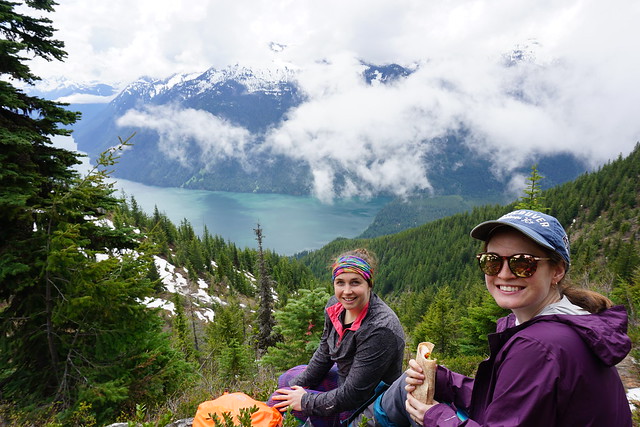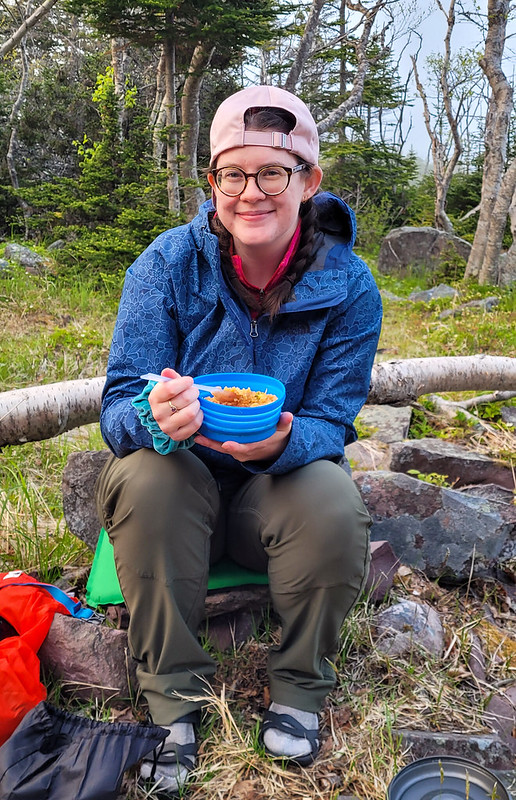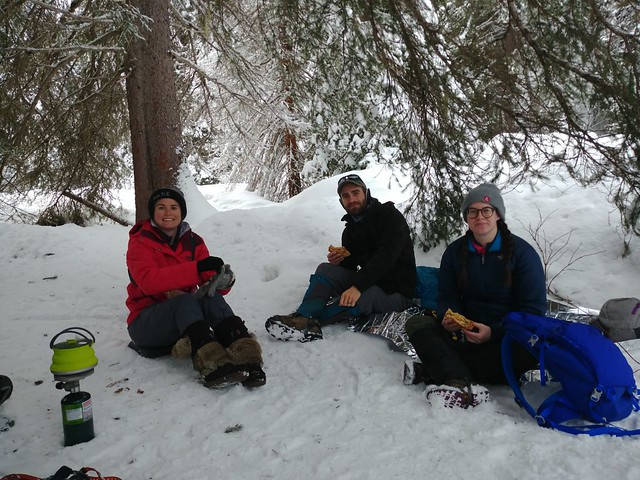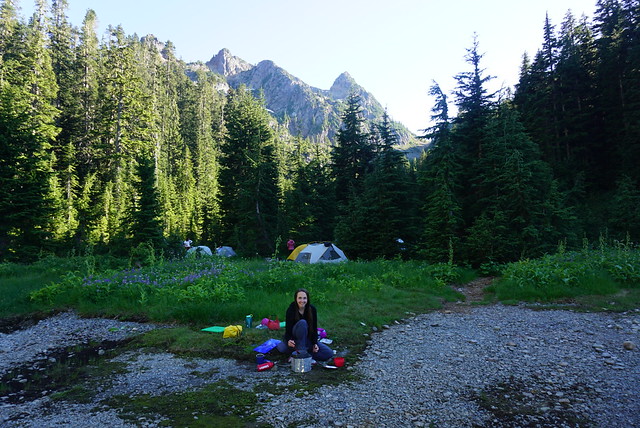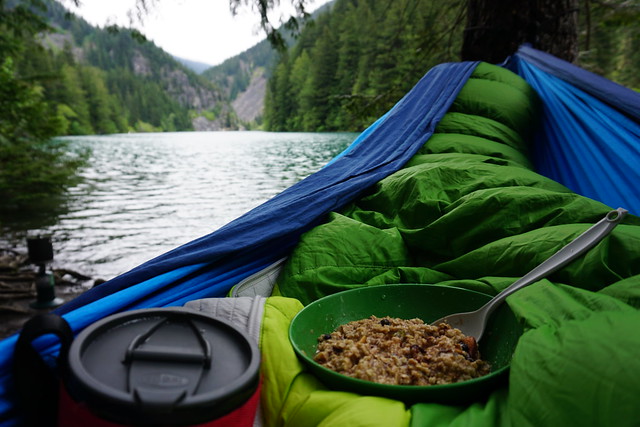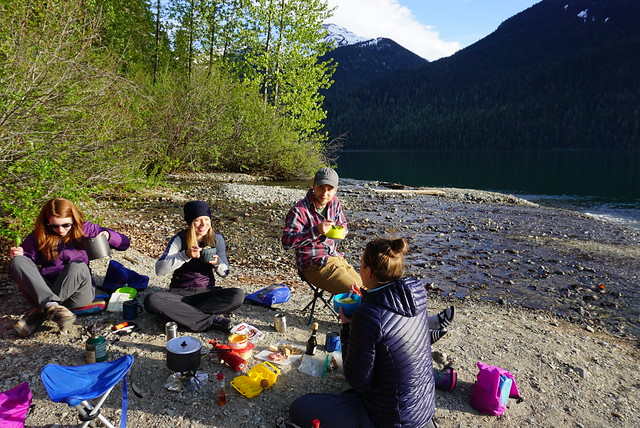As discussed in my last post, I’m a big fan of dehydrating! If I cook something that I think can be dehydrated, odds are I’ll try it in the dehydrator. But I didn’t always have a dehydrator and I recognize that it is a lot of time and money to get into dehydrating when there are lots of other options available. Fresh foods are inevitably a little bit heavier than cold soaking, but make alternatives for quick, easy lunches. Here’s some of my no-cook, no-dehydrate lunches that are ready-to-eat:
1. Meat and cheese wrap
This is a classic. There are lots of meats that keep well in the backcountry and can be eaten un-refrigerated for a few days. I’ll usually buy a roll of salami and eat it over the course of 2-3 days. Likewise, there are several cheeses that can handle a few days without refrigeration. The best are babybel and laughing cow, but aged cheeses will often do okay for a few days, so sometimes I’ll bring an aged cheddar wrapped in wax to eat early in the trip. If I don’t mind eating it dry, I’ll bring some crackers in my mug, but most often I bring a tortilla wrap and a little hummus container (from costco or superstore). If it’s the first day, I might bring an avocado and a bit of bell pepper, in the photo above I even had cucumber!
2. Egg salad wrap
This one isn’t as long lasting as the meat and cheese wrap, but I still love it. I like to live on the edge, so I’ll hard-boil my eggs before a trip and eat them for the first two days. If you’re lazy, eggs on their own are filling and have lots of protein, but I’ll smash mine on a tortilla with some hard cheese for a wrap. I used to bring a little container of mayo, but more often than not these days I just eat it dry. A few sundried tomatoes can really add some flavour though, and don’t forget salt and pepper!
3. Chickpea wrap
This was one of my go-to recipes when I was first figuring out how to be vegetarian. It’s so simple, you mash up a can of chickpeas at home and throw in some mayo, lemon juice, and dill. You don’t want to whip or mix it because then it will just become hummus; I like to keep mine nice and chunky and will usually throw in some diced pepper and green onion for more substance. I recommend eating this one on the first day though. It keeps okay if it’s cool, but it does deteriorate pretty quickly on a hot day. Eat with tortilla and hard cheese.
4. Tuna wrap
I can’t lie, I’ve never actually made this one because I’m not a tuna lover, but it’s such a classic backcountry lunch that I wanted to include it anyways. Similar to all my other options, bring a small can or packet of tuna and slap in on a tortilla with some hard cheese.
5. Ramen Bomb
Another lunch I’ve never eaten myself, but is popular among the backpacking community is the Ramen Bomb. It basically consists of cold soaking a pack of ramen noodles with instant mash potatoes and your protein of choice (spam or tuna work well). All of these things are cheap to buy at the grocery store and can rehydrate with cold water (though I’d imagine it’s quicker and tastier with hot water). I can’t stomach spam or cold potatoes, so this one is a no from me, but lots of people love it!
6. Cheese and jerky
This is the real low budget option – just grab a handful of your favourite jerky or pepperoni sticks (Brandon favours the Korean BBQ pork from Costco) and your favourite cheese (moon cheese, whisps, babybel, or laughing cow) and make a meal out of it. As you can see, I rely heavily on tortilla wraps for my no-cook lunches, but there’s nothing wrong with loading up on snacks for lunch instead. Lots of people just eat protein bars and trail mix, but I like having a proper lunch, so these are the things I rely on.

